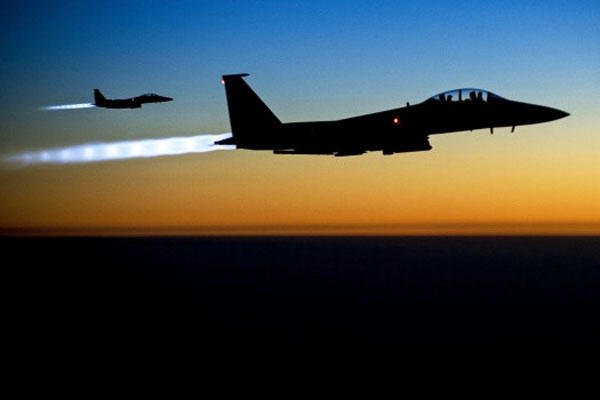U.S. manned and unmanned airstrikes killed at least 20 civilians and wounded 11 while hitting nine "legitimate" ISIS targets in Iraq and Syria between September last year and February this year, U.S. Central Command estimated Friday.
The latest count brought the number of civilians killed since the air war began in August 2014 to 41, with the total number of wounded estimated at 28, according to CentCom. The U.S. military was also looking into another 25 allegations of airstrikes that caused civilian casualties that have been "deemed to be credible," said Air Force Col. Pat Ryder, a CentCom spokesman.
"We deeply regret the unintentional loss of life and injuries resulting from those strikes and express our deepest sympathies to the victims' families and those affected," Ryder said in a phone briefing to the Pentagon from CentCom headquarters in Tampa, Florida.
Ryder did not have a breakdown on how many of the nine airstrikes that hit civilians were carried out by drones, but said that the aircraft used were a "mix" of manned and unmanned warplanes. Six of the nine strikes were in Iraq and the other three were in Syria.
Ryder said the casualties occurred despite the U.S. conducting "the most precise air campaign in the history of warfare. We assess the risk before every strike," Ryder said, and "we take all feasible measures to reduce non-combatant casualties."
In the deadliest strike between September and February, at least eight civilians were killed "during a strike on a mortar fire position used by enemy fighters" Oct. 5 near Al Huwayjah in central Iraq, CentCom said.
Ryder said that airstrikes were made more difficult by ISIS fighters hiding in the civilian population. The CentCom report said that in a strike on an ISIS checkpoint in Ramadi in Anbar province on Dec. 12, at least five civilians were believed to have been killed after they "unexpectedly moved into the target location after weapons were already in flight."
Ryder said of the civilian casualties that "it's important to put this in perspective" considering that the U.S. has carried out nearly 12,000 airstrikes since August 2014 and flown more than 91,000 sorties.
"There is no such thing as an intentional civilian casualty," Ryder said. "We are attempting to avoid civilian casualties, but in these cases, unfortunately, we assess that it was likely that civilians had died."
"In this type of armed conflict, particularly with an enemy who hides among the civilian population, there are going to be, unfortunately, civilian casualties at times," Ryder said.
Earlier last week, Combined Joint Task Force-Operation Inherent Resolve in Baghdad announced that the rules of engagement were being changed to allow lower-level commanders to authorize airstrikes when there were concerns that civilians might be in the area.
Previously, a four-star commander at CentCom headquarters in Tampa had to approve such a strike, but Army Col. Steve Warren, a spokesman for CJTF-OIR, said that Army Lt. Gen. Sean MacFarland, the CJTF commander, could now authorize a risky strike and it was possible that others in MacFarland's chain of command might also have that authority in certain circumstances.
-- Richard Sisk can be reached at richard.sisk@military.com.






























